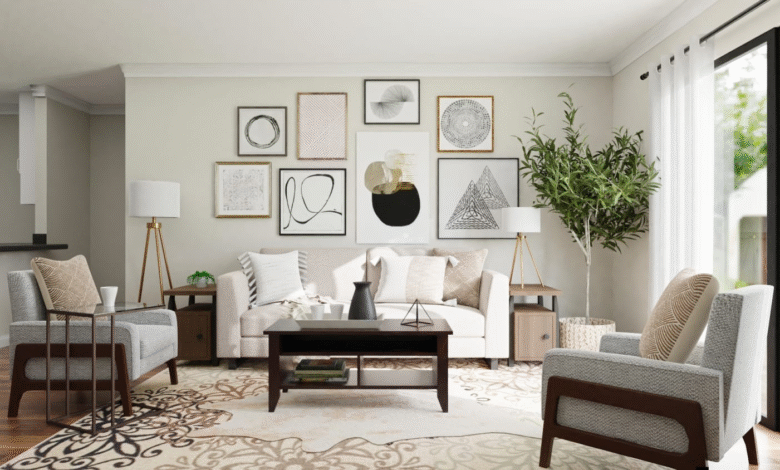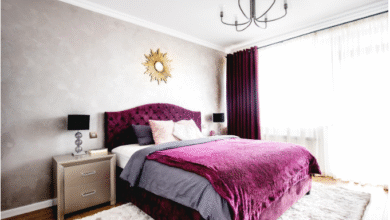The Role of Texture and Layering in Home Furniture Design

Introduction
When we think about designing a beautiful space, most people start with the big decisions—sofa shape, wall color, rug size. But there’s something more subtle at play in truly inviting interiors. Something you can’t quite name but always feel. That “something” is texture. And its partner in crime? Layering.
Texture adds depth, dimension, and a sense of realness. It engages the senses. Layering, meanwhile, is how those textures interact—how materials, tones, and surfaces combine to make a room feel curated rather than staged.
Whether you live in a minimalist loft or a colorful family home, mastering texture and layering is what transforms a space from simply styled to genuinely lived-in.
Start with Your Foundation, Then Build Up
The foundation of any well-layered room begins with a few core pieces—typically seating, large tables, and flooring. These are the quiet anchors of the space, and they set the tone for the rest of the texture story.
Let’s say you begin with a linen-upholstered sofa. Its matte, woven surface already communicates softness and breathability. Now you have a base. From there, layering begins.
You might bring in a leather ottoman—smooth and cool to the touch. Add a wool throw across the arm of the sofa for warmth and contrast. Maybe the coffee table is aged wood, adding a visual patina that suggests comfort and character.
Each material is speaking its own language. But together, they form a conversation.
Mix Hard and Soft, Smooth and Rough
Texture only matters when there’s contrast. A room filled with only sleek materials feels sterile. A space filled with only softness risks looking flat. The goal is balance.
Pair cool marble with warm wood. Juxtapose metal with woven baskets. If your space leans modern and clean, add a single handcrafted ceramic or fringed rug to bring in imperfection—and humanity.
This principle is why furniture stores that prioritize design diversity stand out. A visit to What’s New Furniture, for example, often reveals vignettes where boucle seating is paired with angular glass tables, or rustic reclaimed wood sits beside velvet poufs. These combinations create interest. Tension. Visual movement.
It’s not about matching. It’s about mixing with intention.
Layering Isn’t Just for Accessories
Most people think of layering as something you do at the very end: adding pillows, throws, and a tray with books. And while those details are important, layering starts much earlier in the design process.
Think about your seating arrangement. Do the silhouettes vary? Are some pieces low and cushy, while others are more structured? What about leg styles—are they a mix of open and closed bases?
Layering also happens through shape. Rounded corners meet clean edges. Vertical lines contrast with horizontal surfaces. Every visual cue is an opportunity to add nuance.
And layering can be tonal, too. A room in neutrals doesn’t have to be boring if it includes five shades of taupe, ivory, and sand—all in different finishes and fabrics. That’s where the magic lies.
Texture Has an Emotional Effect
Different materials make us feel different things. Cotton and wool create a sense of warmth. Leather can suggest sophistication or nostalgia, depending on the finish. Velvet reads as cozy and lush. Raw wood brings earthiness and calm.
By layering textures thoughtfully, you can shape the emotional atmosphere of a room—whether it’s meant to soothe, energize, or ground.
That’s why physical interaction is so important in the shopping process. You might read that a chair is upholstered in “nubby boucle,” but until you run your hand across it, you don’t truly know what that means for your space.
In-person browsing at a well-stocked furniture store can help decode that emotional texture palette—because design isn’t just visual. It’s sensory.
Don’t Forget Vertical Texture
Walls, shelves, and windows are part of the texture story too.
Wall treatments—whether matte paint, plaster finishes, or wood paneling—can become major contributors to the overall tactile feeling of a room. Layering shelves with books, ceramics, or textured art adds rhythm and relief to hard vertical surfaces.
Curtains are another secret weapon. Linen or cotton panels add softness. Heavier drapes in velvet or wool bring richness. Even a sheer layer can play with light and create movement.
Look at your vertical surfaces the same way you do your floors and furnishings. What’s missing? Is it warmth? Structure? Softness? Add with intention.
Repetition Is the Glue That Holds It Together
With so many textures in play, you need a few threads that connect the layers. That’s where repetition comes in.
Maybe the grain of your wooden coffee table is echoed in a wall frame. Or the matte black finish of a side table shows up again in a floor lamp. When textures repeat in small, thoughtful ways, they create a quiet harmony that holds the whole design together.
Without these repeats, rooms can feel fragmented. Repetition is the rhythm that lets your eye move from one surface to the next without confusion.
This is often what makes professional showrooms so satisfying. A space might include twenty different materials, but if you look closely, you’ll notice patterns—similar finishes, recurring shapes, echoed tones.
Layered Doesn’t Mean Cluttered
A common misconception is that a richly textured and layered room must also be busy. Not true.
Layering is about visual depth, not visual chaos.
Choose a few strong textures and let them speak. Don’t overcrowd every surface. Leave breathing space between materials. Group smaller objects together instead of scattering them.
Think of a beautifully made bed: crisp sheets, a quilted coverlet, a knit throw, and two to three pillows. It’s simple. But it feels complete. That’s layering.
In a living space, the same principles apply. A textured rug, a mix of cushions, a single accent chair in a unique fabric—that might be all you need.
Seasonal Texture Swaps
One of the easiest ways to refresh your space without buying new furniture is through seasonal texture rotation.
In cooler months, bring out heavier throws, velvet pillows, and darker woods. In warmer months, swap in light weaves, breezy linens, and pale-toned ceramics.
These shifts keep your space feeling alive and in rhythm with your lifestyle—without requiring a complete redesign.
You don’t need to change everything. Just change enough.
Conclusion
In furniture design, texture and layering aren’t extras—they’re essentials. They shape how a room feels, how it functions, and how it reflects the people who live there.
When you walk through a well-curated furniture store like What’s New Furniture, what draws you in isn’t just the individual pieces—it’s how everything comes together through varied textures and thoughtful layering. That’s what makes a space memorable.
So as you design your own rooms, ask yourself: What does the space need to feel like? Then build that feeling through touch, tone, and layers that reflect your life.
Because when it comes to great design, the details aren’t decorative—they’re the difference.




